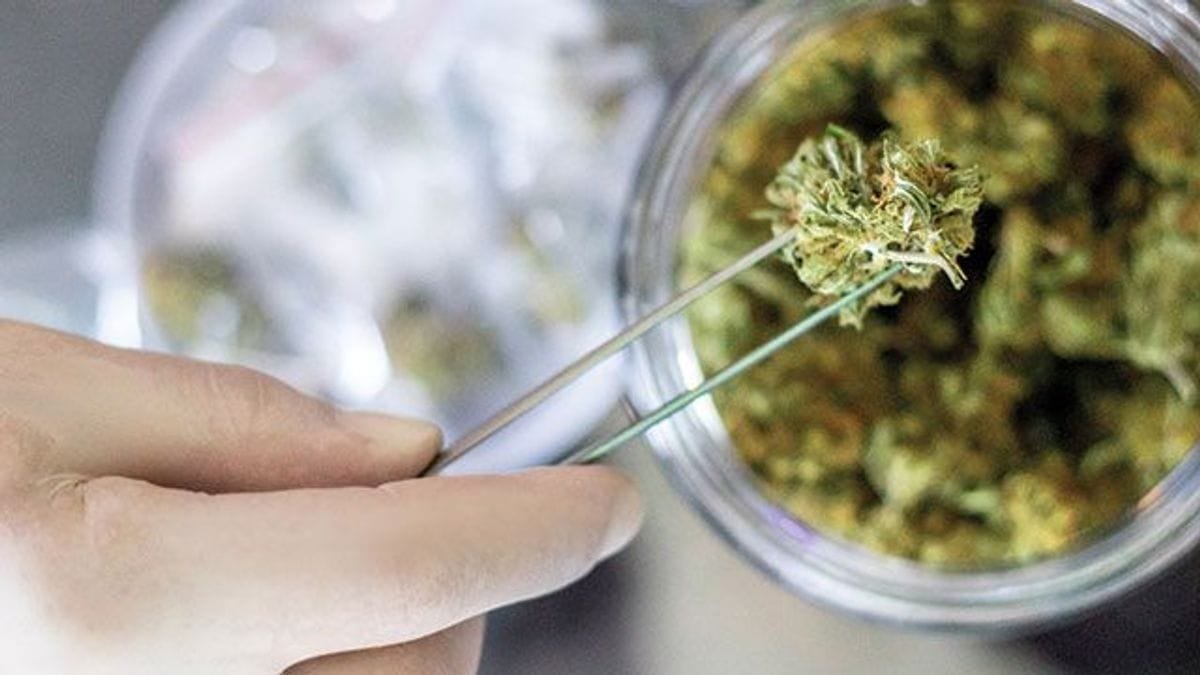Cannabis potency testing is a cornerstone process of the regulated cannabis industry. It is a mandatory requirement that provides essential data to ensure consumer safety, regulatory compliance, and product transparency. With the maturing industry, cannabinoid testing protocols are becoming more comprehensive beyond only THC and CBD measures to include dozens of other therapeutic compounds.
This article explains how cannabinoid potency testing works and why it enables manufacturers to develop consistent, high-quality products.
Sections
ToggleWhat Is Cannabis Potency Testing?
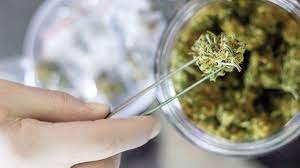
Cannabis potency testing is the analytical process of measuring cannabinoid concentrations in cannabis products using various laboratory techniques. This scientific analysis provides quantitative data determining the exact amounts of psychoactive and therapeutic compounds in flower, concentrates, edibles, and other products.
The goal is to determine:
- Percentage of total cannabinoid content, including THC, CBD, CBG, CBN, and other minor cannabinoids
- Determine the accurate potency levels of products
- Ensure consistency between batches to deliver reliable product quality and therapeutic effects
Why Cannabis Potency Testing Matters
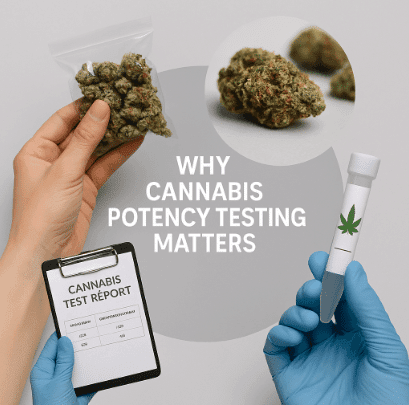
Cannabis potency testing provides several manufacturing and quality assurance standards that ensure:
1. Consumer Safety
Cannabis lab testing provides accurate dosing information, protecting consumers against overconsumption and adverse reactions.
2. Regulatory Compliance
Cannabis testing labs act as quality control centers, ensuring products meet legal requirements for cannabinoid, labeling accuracy, and quality standards.
3. Market Transparency
Producers can create consumer trust with potency testing by providing verified, third-party confirmation of product claims and cannabinoid profiles.
4. Product Consistency
Cannabis lab testing also empowers producers to maintain consistent potency and profile across batches.
What Do Cannabis Testing Labs Look For?
Labs conducting cannabinoid testing, look for these:
- Primary Cannabinoids
The primary goal of testing cannabis products is to determine the quantity of THC (delta-9-tetrahydrocannabinol) and CBD (cannabidiol). These are the most abundant and therapeutically significant cannabinoid compounds. The analysis further tests THC for active delta-9 THC and total potential THC (including THCA). CBD testing measures both CBD and CBDA forms.
- Emerging Cannabinoids
With the discovery of more cannabinoids, modern cannabis testing panels include minor cannabinoids like CBG (cannabigerol), CBN (cannabinol), CBC (cannabichromene), and delta-8 THC. More advanced cannabis testing labs can also analyze newer cannabinoids like THCV (tetrahydrocannabivarin) and delta-10 THC.
- Sample Types
Labs can test any cannabis product for potency, including dried flower, concentrates, edibles, tinctures, topicals, and capsules. The sample preparation and analytical approach depend on the product type, extraction methods, and intended consumption routes.
Testing Methods Used in Cannabis Potency Analysis
Commonly, two testing methods are used for testing the potency of cannabis products:
HPLC (High-Performance Liquid Chromatography)
- HPLC is used in cannabis potency testing for accurate analysis of heat-sensitive cannabinoids without decarboxylation of such compounds during testing
- This method preserves acidic cannabinoid forms (THCA, CBDA) for comprehensive cannabinoid profiling.
GC (Gas Chromatography)
- GC automatically decarboxylates acidic cannabinoids during analysis, providing total potential cannabinoid values
- This technique is used to analyse volatile compounds
The Cannabis Potency Testing Workflow
- Sample Collection & Preparation
The first step is to collect the sample following strict chain-of-custody protocols. The sample is homogenized and prepared in representative portions for analysis.
- Extraction
Cannabinoid potency testing begins with solvent extraction using ethanol, methanol, or other appropriate solvents to dissolve cannabinoids.
- Filtration & Dilution
The extracted sample is filtered to remove particulates and then diluted to appropriate concentrations for instrumental analysis.
- Calibration
All cannabis testing labs use certified reference standards to create a calibration scale for detecting and measuring each cannabinoid. It ensures measurement accuracy and traceability to set standards.
- Analysis (HPLC/GC)
Cannabis potency testing instruments analyze prepared samples using HPLC or GC methods, generating chromatographic data identifying and quantifying individual cannabinoids.
- Reporting
The final step is generating comprehensive reports showing individual cannabinoid concentrations, total cannabinoid content, and regulatory compliance status.
Role of Standards and Calibration in Accurate Testing
- Certified reference material provides a traceable measurement standard for cannabinoid testing labs to follow
- Regular calibration verification maintains analytical accuracy
- Quality control sample monitoring helps detect any analytical drift before it affects reported results
- Proficiency testing programs validate cannabis testing lab performance against other laboratories using identical reference materials
Equipment Used in Potency Testing Labs
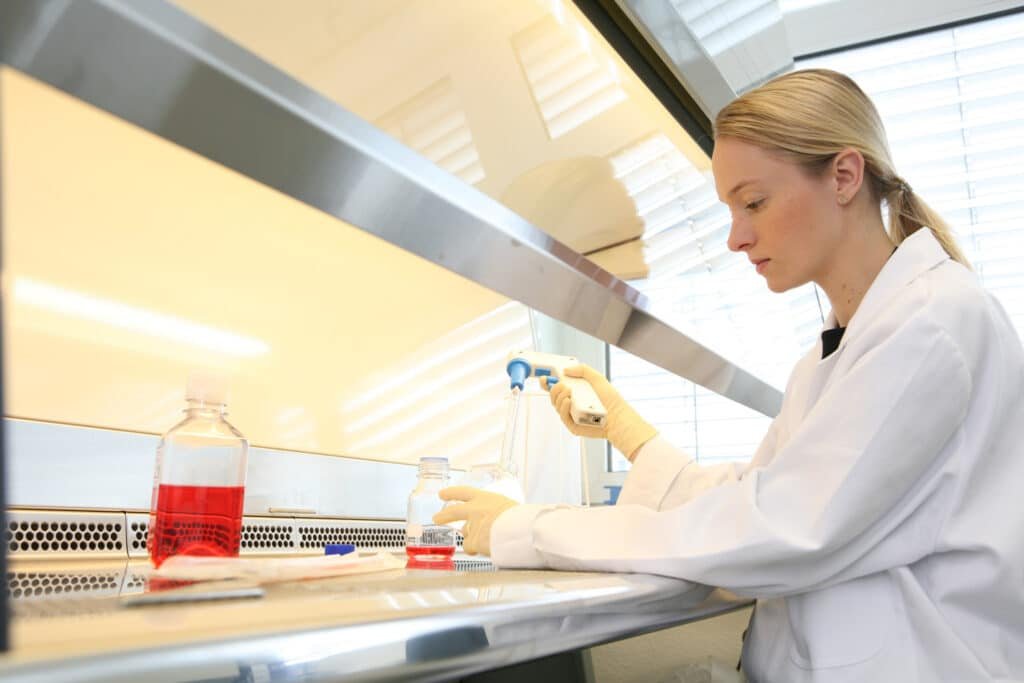
- High-performance liquid chromatographs (HPLC) use UV or mass spectrometric detection hardware for comprehensive cannabinoid potency testing
- Gas chromatographs (GC) with flame ionization or mass spectrometric detection are used for rapid cannabinoid analysis
- Analytical balances with 0.1mg precision are used for accurate sample weighing
- For sample preparation, equipment such as homogenizers, sonicators, and automated extraction systems is utilized
Factors That Affect Test Accuracy
Several factors can affect the accuracy of cannabis potency testing, including:
- Product Form
The accuracy of cannabis potency testing can vary significantly between product types. More homogeneous products like tinctures provide more consistent results than heterogeneous flower samples.
- Nano-emulsions
Cannabinoid testing of nano-emulsified products requires specialized extraction and analysis techniques. Standard extraction methods cannot fully recover nano-encapsulated cannabinoids.
- Sample Homogeneity
Sample homogeneity is essential for preventing measurement errors. Cannabis testing laboratories must ensure homogeneity in representative sampling for products with uneven cannabinoid distribution, like chocolate edibles or infused flower.
- Lab Practices
Lab practices such as proper sample storage, preparation techniques, instrument maintenance, and analyst training directly impact measurement reliability.
Choosing a Reliable Cannabis Testing Laboratory
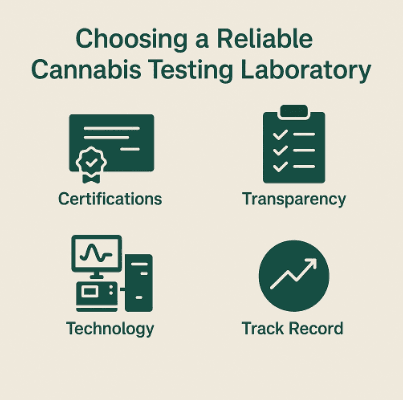
When selecting a cannabis testing laboratory, look for:
1. Certifications
Labs with ISO/IEC 17025 accreditation demonstrate technical competency and quality compliance for analytical testing services.
2. Transparency
A reliable cannabis testing lab provides detailed methodology information, quality assurance data, and clear explanations of measurement uncertainty and detection limits.
3. Technology
Choose a lab with validated analytical methods, modern instrumentation, and appropriate quality control measures.
4. Track Record
A reliable cannabis testing lab will have proven experience, a positive industry reputation, and consistent performance.
Future Trends in Cannabinoid Potency Testing
- On-Site Testing Devices
Modern portable cannabis potency testers are enabling real-time analysis at cultivation and manufacturing facilities.
- Automation & AI
Automated sample preparation and artificial intelligence-driven data analysis are improving the proficiency of cannabis lab testing while reducing human errors.
- Standardization
With the increasing legality of cannabis globally, international harmonization of cannabinoid testing methods will improve result comparability.
- Expanded Testing Panels
We expect future cannabinoid potency testing to include a comprehensive analysis of minor cannabinoids, metabolites, and degradation products.
Conclusion
Cannabis potency testing is a critical component of any regulated cannabis business. It is essential for consumer safety, regulatory compliance, and market transparency. Providing reliable data on ingredients and their potency supports informed consumer decisions and consistent product quality.
FAQs
Q: How long does potency testing take?
Typically, cannabis potency testing takes 3-7 business days. The actual period depends on laboratory workload, testing complexity, and turnaround time requirements.
Q: What’s the difference between total THC and delta-9 THC?
Delta-9 THC is an active, psychoactive form, while total THC includes both delta-9 THC and THCA (which converts to THC when heated).
Q: Do edibles require different testing methods?
Yes, edibles with cannabis require specialized sample preparation and extraction techniques due to complex food matrices.
Q: What is a cannabis potency tester?
A cannabis potency tester is a set of analytical instruments (typically HPLC or GC systems) used in cannabis lab testing.

